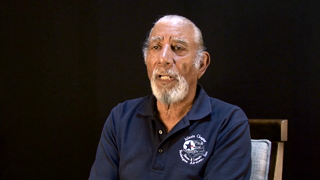5:47 | They went in the recruiting station just to "bug them a little bit." Val Archer and his friend were only sixteen but they sailed right on through. It was 1944 and, after a little work on their birth certificates, they were off to basic training, where they faced the indignities of segregation. Off base, it was even worse.
Keywords : Val Archer Chicago IL birth certificate Chicago Tribune Chicago Defender newspaper Wichita Falls TX segregation segregated Lockbourne Army Air Field 332nd Fighter Group

Val Archer was in an Aviation Engineer battalion when he got orders to report to Lockbourne Army Air Field in Columbus, Ohio. He was now assigned to the 332nd Fighter Group, the Tuskegee Airmen, as ground crew. The famed unit was preparing to go to the Pacific when the war abruptly ended.
Val Archer received a wartime assignment in Korea, but was diverted to the Marshall Islands to take part in a nuclear weapons test. He flew drones with test instruments through the blast area, and with the end of the war, he tried his luck at civilian life. After several "interesting" jobs, he reenlisted and was offered a chance at a new direction.
In the Air Force during the Cold War, Val Archer was retrained again, this time as an instructor and education specialist. He recalls his assignment in England at an RAF base and the eagerness of most personnel to participate. After retirement, he looked back at the struggles over segregation and realized how it made him stronger.
At the end of the war, Val Archer was part of the Tuskegee Airmen as a ground crew member. In 1947, the Army Air Corps became the United States Air Force and began the gradual process of desegregation. His unit was broken up in twos and threes, and scattered to desegregate all-white bases everywhere. He says the true desegregation of the armed forces wasn't really complete until the Vietnam era.